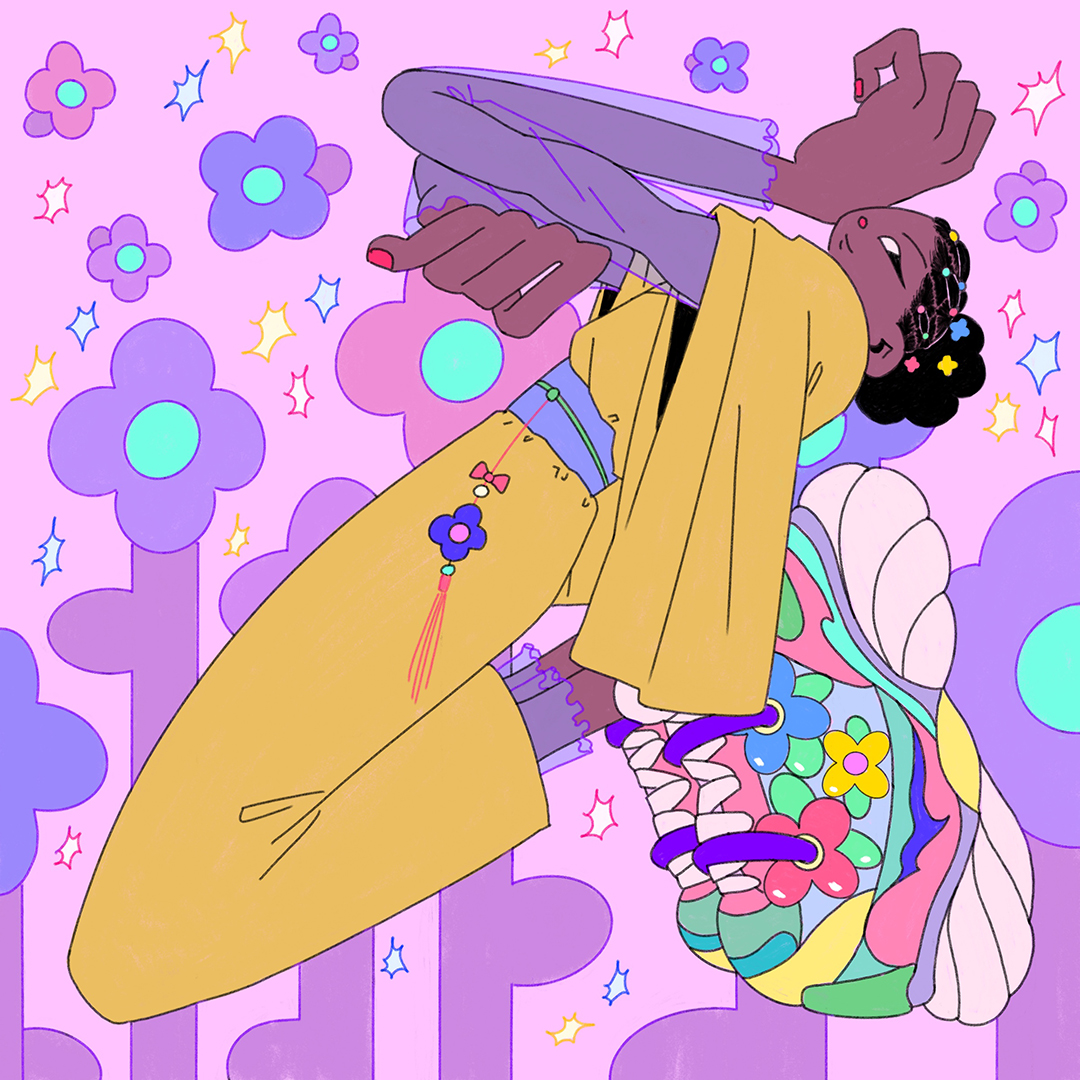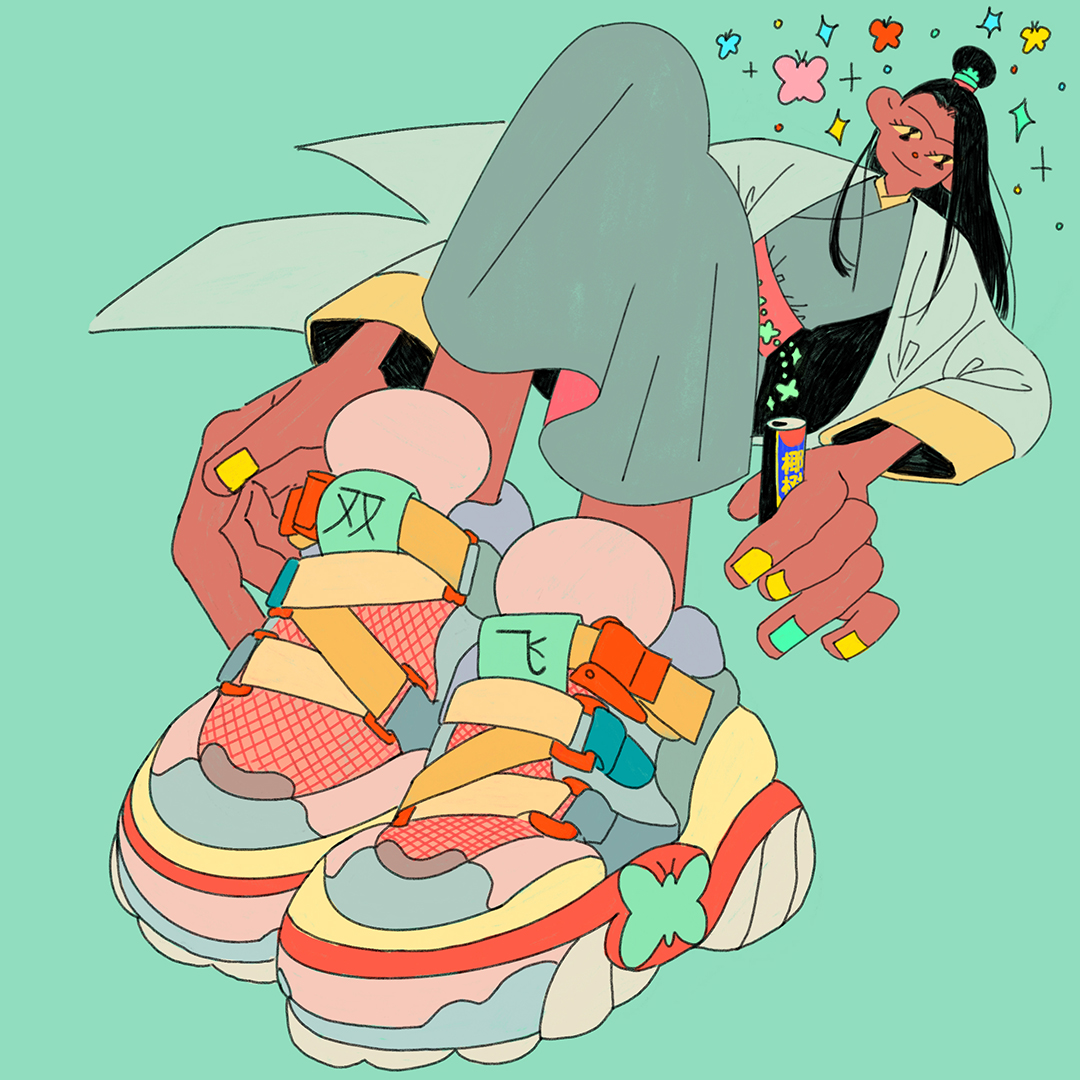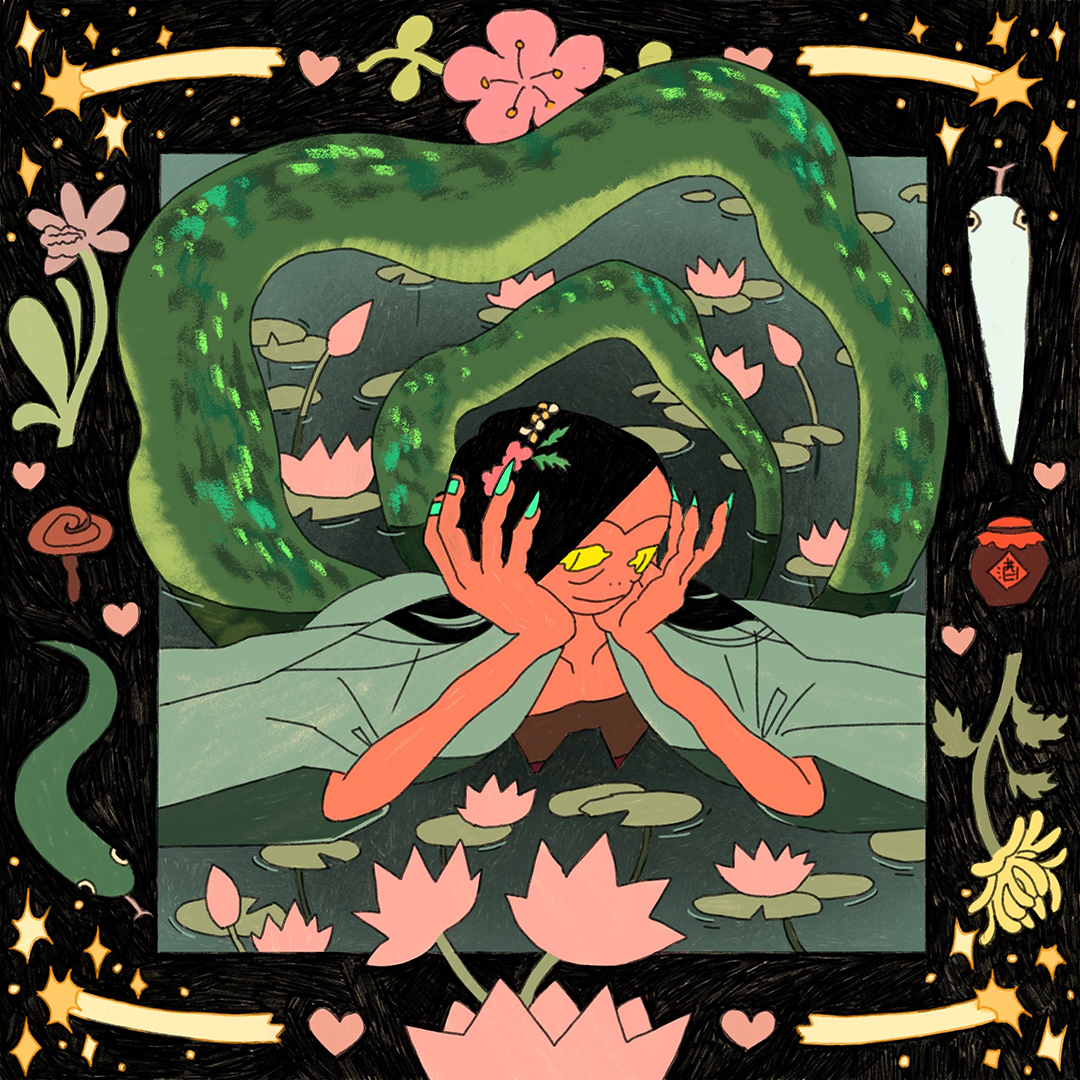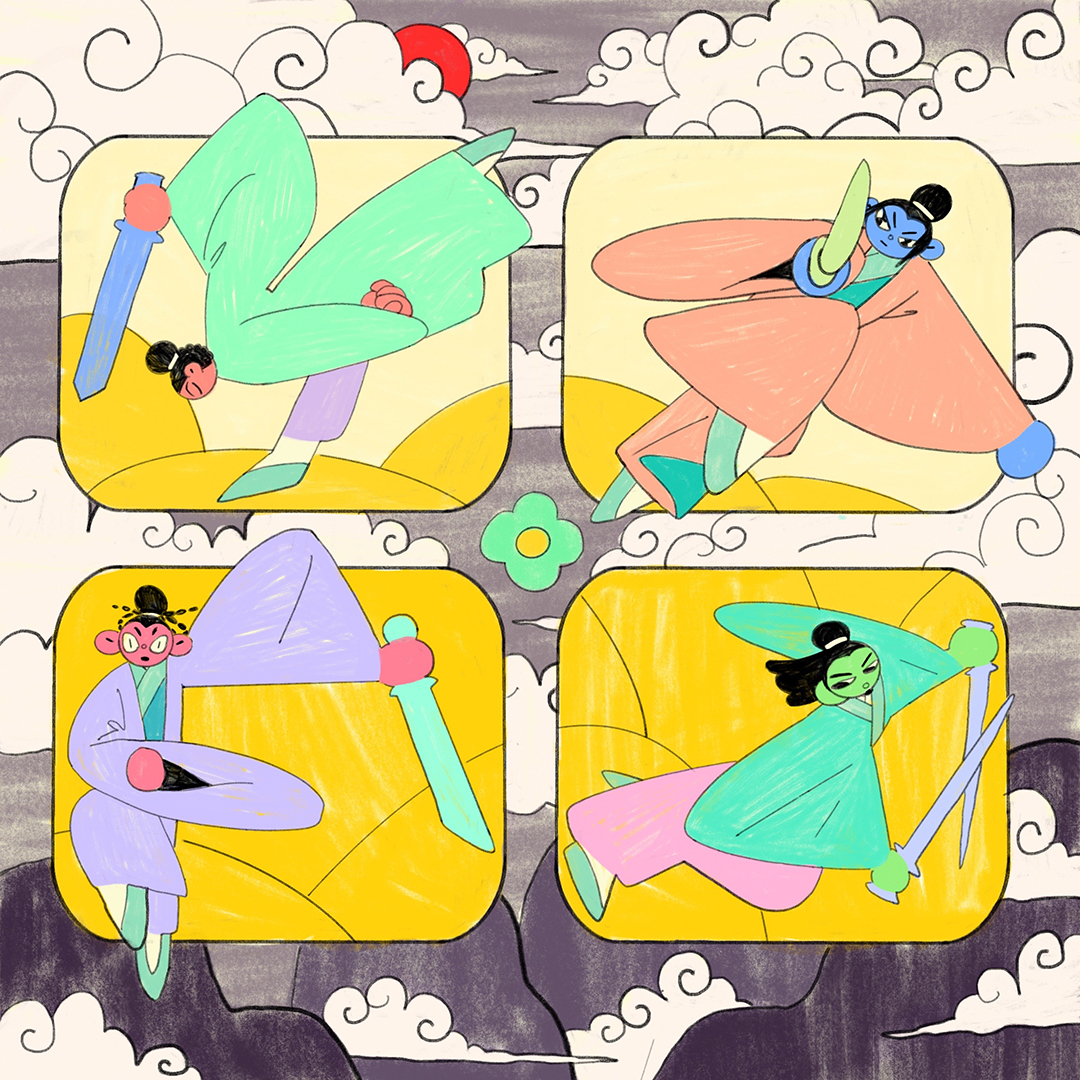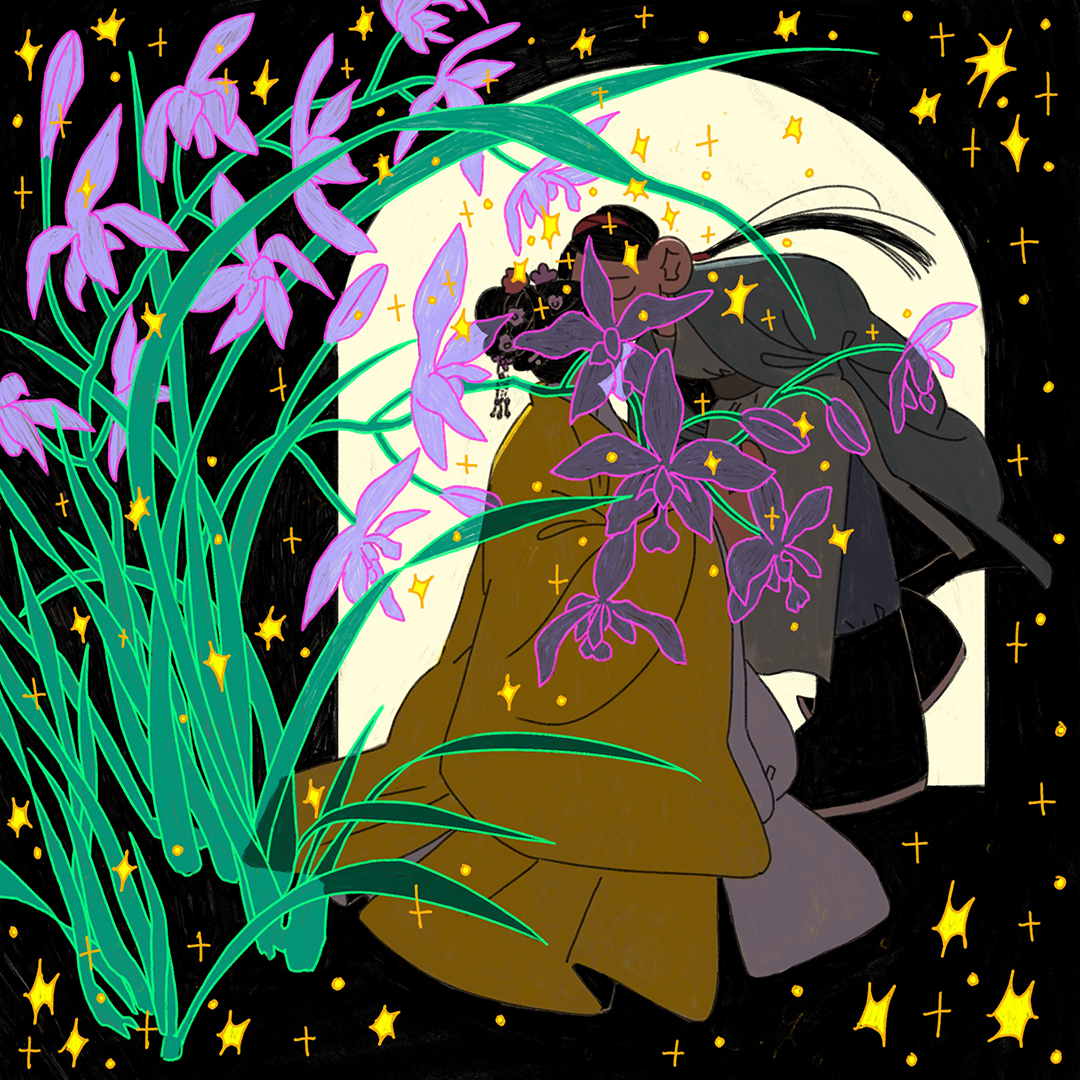Sarula Bao
Meet illustrator and comics artist from Brooklyn, Sarula Bao

Tell us a little bit about yourself.
My name is Sarula, I’m a queer Chinese-American illustrator and comics artist. I graduated from RISD in 2016 and am currently based in Brooklyn. I published a graphic novel in 2017, and since then have also written for comics, consulted on comics, and worked as a freelance illustrator.
Describe the city you’re living in and what it’s like to live there.
Living in New York is incredible. It’s always hectic, even in pandemic quarantine times where things have slowed down, it still doesn’t feel like there’s enough hours in the day to do everything that I want to do, and I love that.
Living in New York is incredible. It’s always hectic, even in pandemic quarantine times where things have slowed down, it still doesn’t feel like there’s enough hours in the day to do everything that I want to do, and I love that.
What is the best and worst thing about living in your city?
The best thing is being a part of the BIPOC LGBTQ and creative communities. Nothing has been more dear to me than being surrounded by a loving and supportive community who are always inspiring me to be better to myself, my work, and the people around me. The worst things are the abysmal way the state has handled the COVID-19 crisis and a multitude of other extremely pressing problems that I’ll save for rants on social media haha.
Give us 3 words that describe what it’s like to be a creative in your city.
Hectic, inspiring, stimulating
How did you start your career in art?
I’ve been drawing all throughout my life. It was a given that I would attend art school, and after that, I worked on a graphic novel as an illustrator and published it with the University of Toronto Press. I was lucky and privileged enough to have my parents support me financially during this time and my move to New York. After about half a year of working on the graphic novel, I supported myself by working retail at Muji and building my portfolio. The cost of living in New York is so high and it’s still been pretty impossible to do freelance full time for me, so I’ve always had a part-time job on top. I’ve gone through many jobs here, including artist’s assistant, gallery administrator, executive gallery assistant, riso technician, etc. and that’s both a necessity and a lifestyle that I also enjoy. I like to have my art-related non-illustration job to keep me busy and out of the house, as well as the safety it provides in case I experience a lull in freelance gigs. And the part-time factor gives me the time to do freelance and personal work.
Were the people around you supportive of your decision on working as a creative?
Yes, always. My father’s an artist and my mother is a writer, so it made them very happy that I would pursue art.
It’s my goal to create worlds that can feel comfortable and familiar to other Asian-Americans, that provide both a measure of distance from the west, while still speaking to the diasporic experiences they can see themselves in. I really want to make a story that can make people feel seen, maybe a little called out, but also held.
What are some goals and ambitions you have for your future work?
I’ve worked on some graphic novels and comics as an illustrator, but I have yet to write my own full length one. I’m excited by the possibility of being able to use the long format to explore the topics that I have been invested in in my personal work. My personal work over the past two years has been very focused on Chinese subject matters, and it just comes from what I’m drawn to currently. I have a deep love for Chinese narratives and aesthetics, and I’m interested in reinterpreting them through the lens of a 2nd generation Chinese-American to speak to my community here. It’s my goal to create worlds that can feel comfortable and familiar to other Asian-Americans, that provide both a measure of distance from the west, while still speaking to the diasporic experiences they can see themselves in. I really want to make a story that can make people feel seen, maybe a little called out, but also held.
If you could collaborate with any person in the world who would it be?
I think it would be really cool to work with someone in hanfu production or a fashion designer.
What are the biggest challenges you face in working as a creative?
I think it absolutely comes from my Chinese subject matter, and navigating that as a Westerner. When working with material that I both have claim to as Chinese diaspora, yet can’t fully claim as an American, I’m constantly thinking about how much I can play around and push while still honoring and respecting my source. What I do is essentially an appropriation, which is why it’s really important to me to preserve its integrity, even if something must be destroyed to create something new. Art is really powerful and the images we put out there affect people, whether or not we’re aware. For me, one of my most important goals is creating work that has an ultimately positive impact, that does not perpetuate the violence of white supremacy, which runs rampant by way of fetishization and orientalism. Obviously, it’s not possible for me to create work outside of the influence of white supremacy, but it’s really about the constant dialogue, the process of unlearning, and making sure that I am pulling from legitimate Chinese sources, rather than orientalist imagery.
We’re all working to be better, kinder, smarter, and do good in the world!
How would you describe the women around you?
We’re all working to be better, kinder, smarter, and do good in the world!
Were there any local female creatives that you looked up to when you were growing up?
I guess I had my mother, but she was always working and rarely working on her creative pursuits when I was growing up. I grew up in a place without many other artists in general outside of my parents.
Be aware of the space you are either taking up or not taking up, do not be afraid to advocate for yourself and take up that space, but also be careful and aware of when you could be intruding or overstepping, and may need to retreat back into your lane, and give up space for others.
Do you have any advice for other women who are aspiring to work in your field?
My advice, and this goes for anyone, particularly if you’re not a white cishet man, is to be kind and patient with yourself and your work, do not, or at least try not to tie your self worth to your work and career. There are many things in this world to do and be that add to your inherent value as a human being. Be aware of the power dynamics that you encounter, including when a power imbalance favors you. It’s easy to be starstruck by famous and established artists, art directors, and professors, but be cognizant of these influential powerful figures in the industry and how they treat you, and how they may take advantage of you. Be aware of the space you are either taking up or not taking up, do not be afraid to advocate for yourself and take up that space, but also be careful and aware of when you could be intruding or overstepping, and may need to retreat back into your lane, and give up space for others.
What type of music do you like to listen to?
When I’m working, I like to listen to whatever gets me into the mood of the piece or story, so if it’s something fun and playful, I’m usually listening to K-pop and PC Music and that sort of thing. Whenever I’m working on my Chinese period piece comics I’ll listen to gufeng music, which is a perfect fit because it’s a modern interpretation of traditional Chinese style.
What’s your favorite local food spot?
I love so much food… Sichuan Mountain House is really good, in Chinatown, Noodle Village for their congee and soup dumplings, Cha Chan Tang for their baked spaghetti and porkchop, Tonii’s Fresh Rice Noodle is also really good.
Min Heo asks: What kind of career struggles have you been through and how did you overcome them?
I think getting started was the hardest. When I was in school I had a lot of difficulty settling on a style and would just copy whatever artist I felt had a style that suited the piece. I felt this immense pressure to have it all figured out, to be working immediately with a full time gig because how else would I be able to afford living in NYC? The reality was that I couldn’t get any illustration job I applied for so I was working at Muji basically full time. But in doing so I also felt relief that I didn’t have to draw for money, and I could just draw whatever I wanted. I kept coming back to the same things I liked drawing, and the more I did that, over and over, I was able to develop a style, and an overall understanding of my own work and vision. As I figured myself out, I naturally started getting more freelance jobs as clients found me for projects that were a good fit with what I work with.
Bearbrickjia asks: How does your dream work space looks like?
Well, it would have a desk, a good chair, big window, cute and organized storage for all of my papers and supplies which are always everywhere, lots of bookshelves. And a fancy two color riso printer.
What question would you like us to ask the next artist?
What are your biggest inspirations?
Photos courtesy of Sarula Bao
Website:
Instagram:
Twitter:
Category:
USADate:
February 19, 2021



